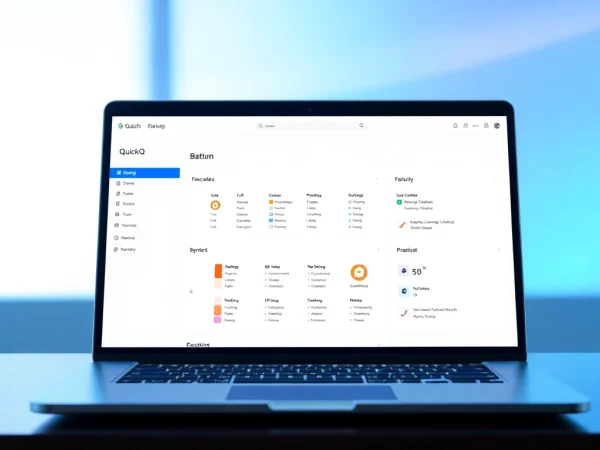Mastering Web Development: A Comprehensive Guide to Building and Maintaining Websites
Introduction to Web Development
In the digital age, the importance of a well-crafted online presence cannot be overstated. Every business, individual, or organization aims to establish a connection with its audience through engaging websites. This is where web development comes into play. It’s not just about creating a visually appealing site; it encompasses a wide range of tasks that lead to the development and maintenance of websites and web applications.
What is web development?
Web development refers to the work involved in developing websites for the internet or a private network. This process includes several aspects such as web design, web content development, client-side/server-side scripting, and network security configuration. The ultimate goal of web development is to create a seamless and efficient user experience that fulfills the specific needs of users or clients.
Importance of web development in today’s digital world
The digital landscape continues to evolve, making web development an indispensable profession. Here are a few reasons why web development holds significant importance today:
- Visibility and Credibility: A well-developed website enhances credibility and visibility, fostering trust among users.
- Targeting Your Audience: Tailored websites allow for better targeting of demographic audiences, improving engagement and conversion rates.
- Adaptability: The growing use of mobile devices necessitates responsive website designs that adapt to various screen sizes.
- Competitive Advantage: Investing in quality web development can give businesses an edge over competitors with outdated or poorly designed sites.
- Integration of Marketing Strategies: Web development allows for the integration of effective SEO strategies that increase visibility and organic traffic.
Overview of different web development categories
Web development can broadly be categorized into three main types:
- Front-end Development: Involves visual aspects of a website, focusing on what users see and interact with directly, often using HTML, CSS, and JavaScript.
- Back-end Development: Deals with server-side operations, database interactions, and application logic, ensuring everything functions under the hood.
- Full-stack Development: Combines both front-end and back-end development, enabling developers to work on the entire project lifecycle from start to finish.
Key Technologies in Web Development
Understanding HTML, CSS, and JavaScript
The foundational technologies in web development include:
- HTML (HyperText Markup Language): The standard markup language for creating web pages. It structures content and applies a basic layout.
- CSS (Cascading Style Sheets): A style sheet language used for describing the presentation of a document written in HTML. CSS controls the layout and appearance of elements on a webpage.
- JavaScript: A programming language that enables interactive web features. It’s essential for enhancing user experience through dynamic content.
Frameworks and libraries supporting web development
Frameworks and libraries provide pre-written code that simplifies the development process by offering ready-made solutions to common programming tasks. Some popular frameworks include:
- React: An open-source JavaScript library for building user interfaces, particularly single-page applications.
- Angular: A platform and framework for building client-side applications using HTML and TypeScript.
- Vue.js: A progressive JavaScript framework for building user interfaces that can also function as a web application framework.
- Bootstrap: A popular front-end framework for developing responsive and mobile-first websites.
Emerging technologies influencing web development
As technology evolves, several emerging trends are shaping the future of web development:
- Progressive Web Applications (PWAs): Combining the best of web and mobile apps, PWAs enhance user experience by allowing offline usage and faster loading times.
- Artificial Intelligence (AI): AI tools are being used in web development for chatbots, personalization, and automation, assisting with user engagement.
- Voice Search Optimization: As voice assistants grow in popularity, websites are increasingly tailored for voice search, requiring new optimization strategies.
- Single Page Applications (SPAs): SPAs provide a more dynamic user experience by loading all necessary code with a single page load, offering smooth transitions and faster navigation.
Web Development Life Cycle
Phases of web development: planning, design, implementation
The web development life cycle consists of structured phases that guide the development process:
- Planning: This initial phase involves defining project goals, audience analysis, and creating a project plan, which serves as the roadmap for all subsequent phases.
- Design: During the design phase, wireframes and prototypes are developed to visualize the website’s layout and features, focusing on user experience and aesthetics.
- Implementation: The actual coding takes place in this phase, bringing the design to life. Developers use various programming languages and frameworks to build the site functionality.
Testing and deployment processes
Testing is crucial in ensuring the site’s functionality and usability before deployment. Key testing processes include:
- Functionality Testing: Checking all functionalities to ensure they work as intended.
- Usability Testing: Gathering real user feedback to identify pain points and improve navigation and layout.
- Performance Testing: Examining site speed, responsiveness, and load-testing under varying conditions.
- Deployment: Once tested, the website is deployed to a live server, making it accessible to users.
Maintenance and ongoing support strategies
Post-launch, the website requires continuous maintenance to ensure functionality, security, and relevance. Essential maintenance strategies include:
- Regular Updates: Updating content and software regularly to prevent security vulnerabilities.
- Monitoring Performance: Using analytics tools to track and analyze traffic patterns, user engagement, and identify areas for improvement.
- User Feedback: Maintaining channels for receiving feedback from users to enhance their experience continually.
Best Practices for Web Development
Ensuring accessibility and usability
Creating accessible websites is essential to accommodate users with disabilities. Best practices include:
- Use of alt text: Providing descriptive alt text for images to assist visually impaired users.
- Keyboard Navigation: Ensuring that all website functionality can be accessed using a keyboard alone.
- Color Contrast: Maintaining high color contrast to enhance readability.
SEO strategies for optimizing web development
Search engine optimization (SEO) is vital for ensuring that a website ranks well in search engine results. Key strategies include:
- Keyword Research: Identifying and targeting relevant keywords that your audience is searching for.
- Meta Tags: Utilizing meta tags effectively to provide search engines with relevant page information.
- Mobile Optimization: Ensuring the website is responsive, providing optimal viewing on all devices.
- Content Quality: Creating high-quality, engaging, and relevant content that meets user expectations and encourages sharing.
Responsive design principles for web development
As mobile browsing continues to increase, responsive design is paramount. Key principles include:
- Fluid Grids: Using percentage-based widths instead of fixed sizes for layout elements.
- Media Queries: Implementing CSS media queries to apply different styles based on screen size and orientation.
- Flexible Images: Ensuring images scale well and do not exceed their containing elements.
The Future of Web Development
Trends shaping the future of web development
The future of web development is continually evolving, influenced by various trends and technologies. Some trends to watch for include:
- Decentralization: The growth of decentralized web technologies that reduce reliance on central servers and enhance privacy.
- Augmented and Virtual Reality: Increasing use of AR and VR to create immersive user experiences on the web.
- Chatbots: The rise of AI-powered chatbots on websites for enhanced customer service and support.
Impact of artificial intelligence on web development
AI is set to revolutionize web development by automating certain aspects of the design and development process. Potential impacts include:
- Code Generation: AI could assist in writing code, reducing the time developers spend on routine coding tasks.
- Personalization: AI can analyze user data to provide personalized web experiences, enhancing engagement.
- Adaptive Learning: AI-driven tools can learn from user interactions to adapt and refine website functionalities over time.
Career opportunities in web development
The demand for skilled web developers is on the rise, leading to diverse career opportunities such as:
- Front-end Developer: Focused on user interface and experience design.
- Back-end Developer: Involved with server-side operations and database management.
- Full-stack Developer: Skilled in both front-end and back-end technologies, offering a comprehensive understanding of web applications.
- Web Designer: Primarily focuses on the aesthetic and usability aspects of the website.
- SEO Specialist: Concentrates on optimizing websites for search engines to increase visibility and traffic.










